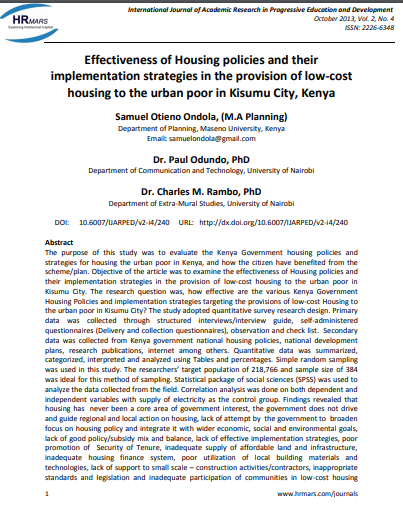Effectiveness of Housing policies and their implementation strategies in the provision of low-cost housing to the urban poor in Kisumu City, Kenya
The purpose of this study was to evaluate the Kenya Government housing policies and strategies for housing the urban poor in Kenya, and how the citizen have benefited from the scheme/plan. Objective of the article was to examine the effectiveness of Housing policies and their implementation strategies in the provision of low-cost housing to the urban poor in Kisumu City. The research question was, how effective are the various Kenya Government Housing Policies and implementation strategies targeting the provisions of low-cost Housing to the urban poor in Kisumu City?


